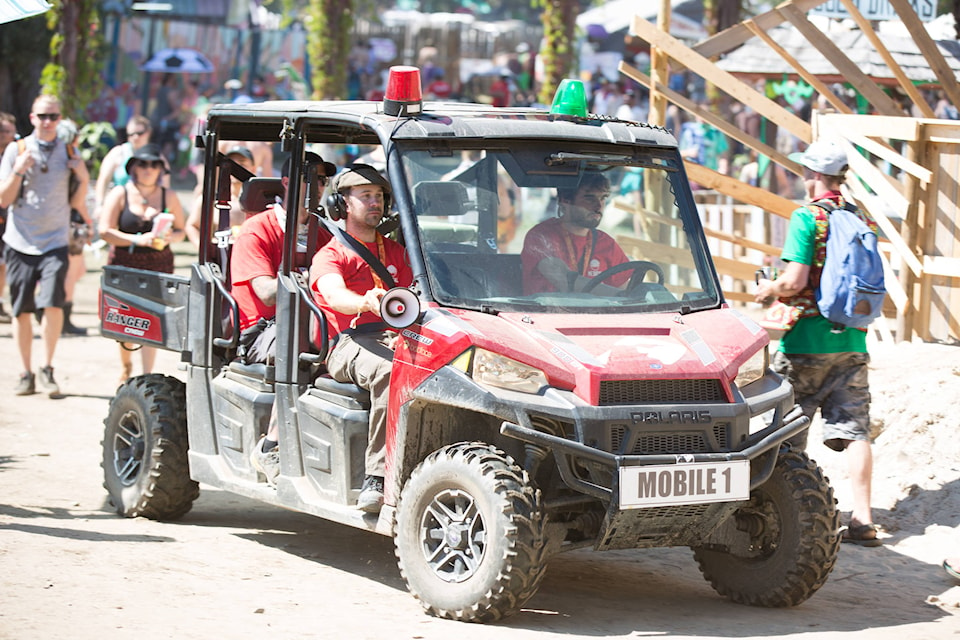A new wildfire in the Kootenay region has Shambhala Music Festival organizers preparing for the possibility of an evacuation.
The McCormick Creek fire broke out Tuesday near Trail, and is burning at an estimated 75 hectares in size, according to the BC Wildfire Service. It’s also about 12 kilometres away from the music festival grounds.
The Regional District of Central Kootenay issued an alert for a few dozen residents Wednesday night.
But evacuating the 15,000 attendees at the Shambhala Music Festival in a wildfire emergency would be much easier than evacuating a regular town, says its public safety director.
“It’s a more well-defined space than a city that is spread out in individual homes where you wouldn’t know if they are home or not,” said Chris Armstrong, who spoke to the Nelson Star ahead of annual event that began Friday.
Shambhala organizers issued a memo Wednesday asking attendees to plan ahead for the possibility of an evacuation becoming a realty.
The RDCK also urged festival goers to maintain a designated driver and means of quick evacuation from the area.
Meanwhile, Armstrong said the festival has 2,500 staff, all of whom are trained in emergency protocols and who are in constant communication with each other.
“Just like in any other city or large organization, you have emergency response plans for all the things you can think of that could possibly happen,” Armstrong said. “For a fire evacuation or any evacuation, we have response plans for that.”
Armstrong said he has 21 years of experience in search and rescue and emergency management.
As wildfires burn across the province due to tinder-dry weather, security is also keeping an eye on people – who may be intoxicated or impaired – and their use of candles and cigarette butts.
“We have 25 trained fire fighters out here, so there is not much that can happen that we can’t put it out on our own before any call gets made. We have a bigger fire system than most small communities, we have our own fire department, trucks, more trained fire personnel than most towns, and we have a 500-acre piece of property and 150 of it is open field.”
Armstrong admitted there are some difficulties with the single-road access, but he pointed out that the festival site is less than a half kilometre from the highway, so people would walk out either on the road or in the mostly ankle-deep river. It would take 24 hours to evacuate everyone with their vehicles, he said.
#Shambhala2017 is ~ 12 km away from newest concerning #BCWildfire in #Kootenay region. Attendees being encouraged to keep a DD. Update: 10AM pic.twitter.com/RLR1NwFpXH
— Ashley Wadhwani (@ashwadhwani) August 10, 2017
Once people had walked to the highway, there would be a question of where they would go from there, he said.
“But that is absolutely the remotest possibility, and there would be enough ramp up and warning for that, and arrangements would be made with Emergency Management B.C., they would be there and have a check-in system for them as displaced travellers.”
Armstrong said the Southeast Fire Centre and regional emergency management staff would give warnings and alerts, and once an alert was given, the festival would start preparing. Most of the evacuation protocols, he said, are not to actually evacuate, but to prepare for it.
“It’s no different from any other community,” Armstrong said. “The difference is that we have 2,500 staff to pull it off.”
“If another community were to get evacuated, they would be better off to come here,” he said.



